Lieutenant Samuel Victor Hood
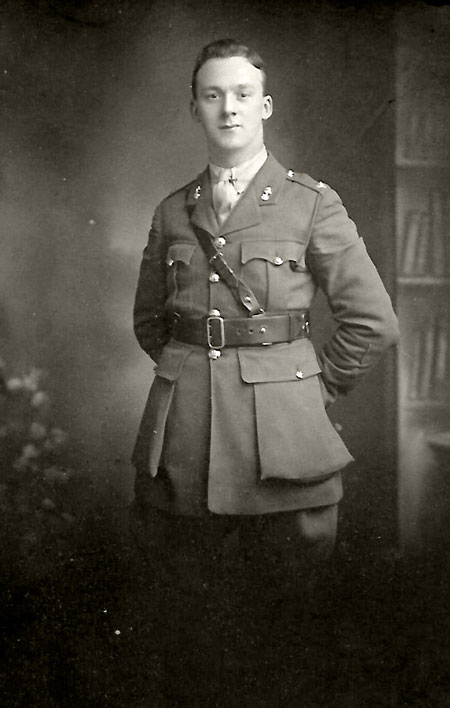
Samuel Victor Hood was born on 26 June 1897 in Church Street, Dungannon, County Tyrone, the fourth of five children of confectioner Samuel Henry Hood and his Dublin-born wife Eleanor Alice (nee Groombridge). At various time his father's occupation was given as trumpeter with the Royal Artillery, stock-keeper with the Royal Engineers stores in Belfast, mineral water salesman, and car owner. Samuel Victor was educated at the Belfast Model School. When the war began he was living with his parents and two surviving siblings at 200 Donegall Avenue, Belfast, and working as an apprentice in the firm William Adams & Co Ltd, Donegall Road Weaving Factory.
Hood enlisted in the North Irish Horse at Antrim on 25 November 1915 (No.1967). At the beginning of 1917 he embarked for France, where he was posted to B or C Squadron of the 2nd North Irish Horse Regiment.
In September 1917 the 2nd North Irish Horse was dismounted and most of its men were trained as infantrymen and transferred to the 9th (Service) Battalion, Royal Irish Fusiliers – renamed the 9th (North Irish Horse) Battalion. Hood was formally transferred on 7 October and issued regimental number 41558. He did not, however, join the battalion, for on 8 October he applied for a commission in the infantry.
Soon after, Hood returned to the UK and following a period of leave, on 8 February 1918 he reported for duty at No.7 Officer Cadet Battalion, Fermoy. On 31 July 1918 he was commissioned as a 2nd lieutenant and posted to the 3rd (Reserve) Battalion, Royal Inniskilling Fusiliers.
Hood returned to France in September 1918, where he was posted to the 2nd Battalion, Royal Inniskilling Fusiliers. On 14 October the battalion was involved in an attack towards Gulleghem in Belgium. Despite strong opposition from enemy machine guns and artillery, good progress was made, and on the following day Gulleghem was captured and Heule beyond it. The 2nd Battalion lost one officer killed and four wounded, and 19 other ranks killed, 123 wounded and two missing. Second Lieutenant Hood was among the casualties, sustaining a severe thigh wound on the first day.
Hood recovered, however, and after the Armistice was attached to the Hampshire Regiment. He was promoted to lieutenant on 31 January 1920 and relinquished his commission on completion of his service on 3 April that year.
Hood later worked as a factory manager. He died at his home at Lakeview, Bessbrook, County Armagh, on 24 November 1945. He was buried in Christ Church Cemetery, Bessbrook.
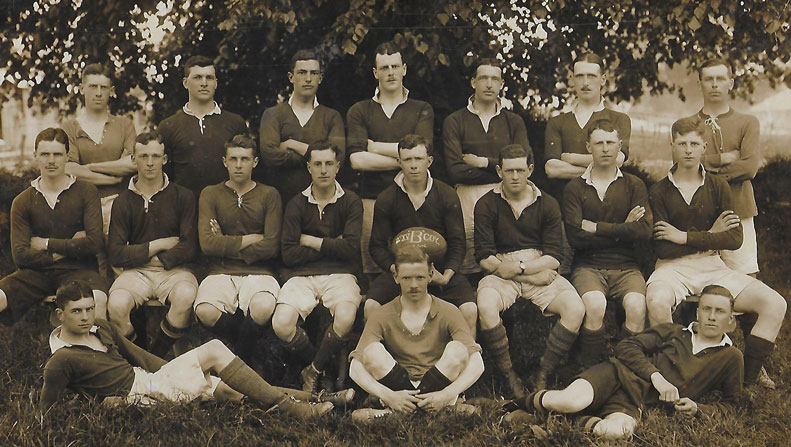
B Company second XV Rugby team, probably during officer training at Fermoy. Hood is seated, second from left.

The Busy Bees entertainment group, probably during officer training at Fermoy. Hood is in the back row far right.
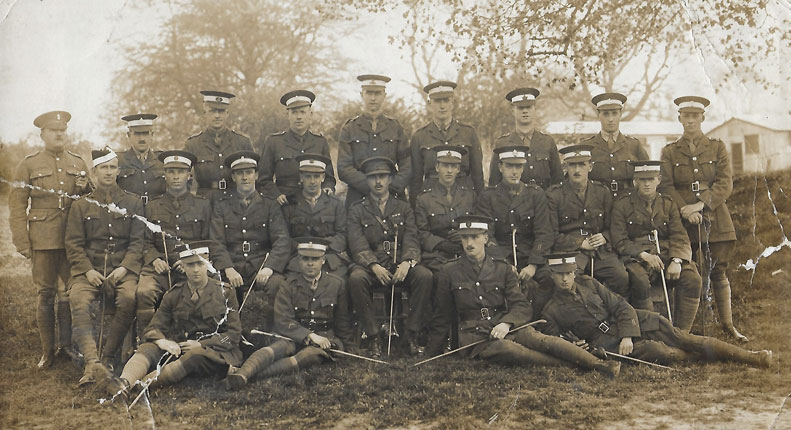
Passing out group at Fermoy, July 1918. Hood is standing far right. He wears an Inniskilling Fusiliers cap badge.
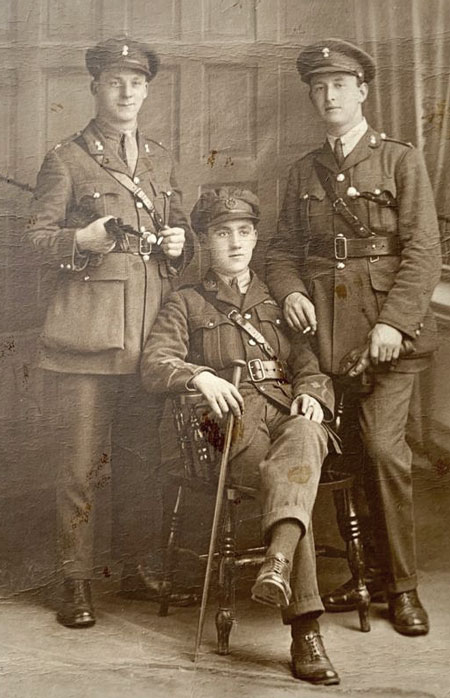
Three officers, Hood on the left. The man seated appears to be Royal Air Force.
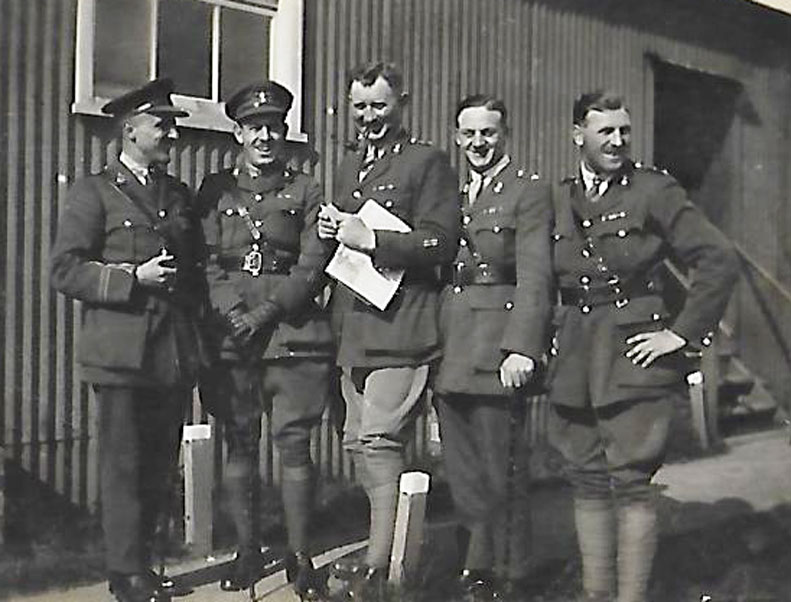
Officer group late 1918 or early 1919. Hood is second from the right. Probably while attached to the Hampshire Regiment.
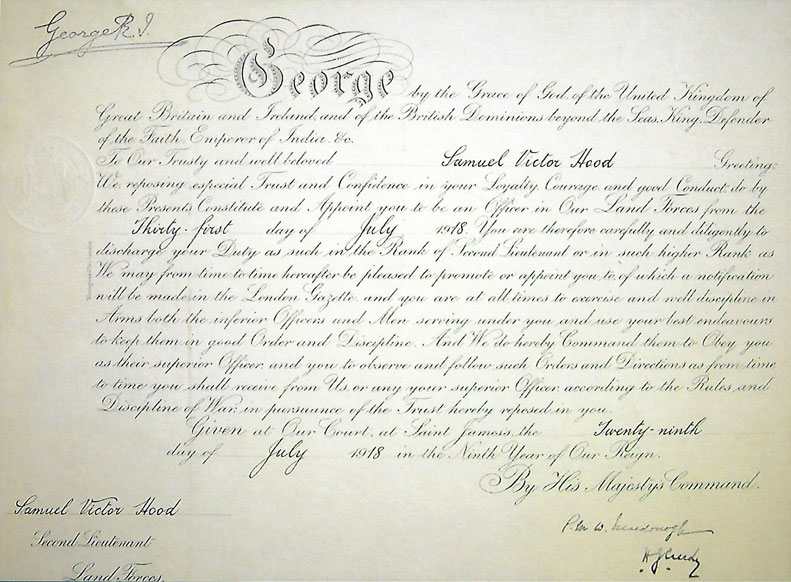
Hood's commission
Images kindly provided by David Hood, grandson of Samuel Victor.
